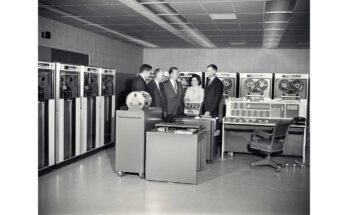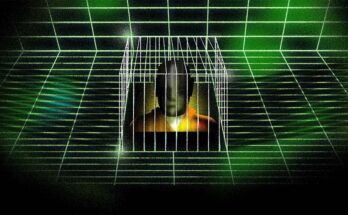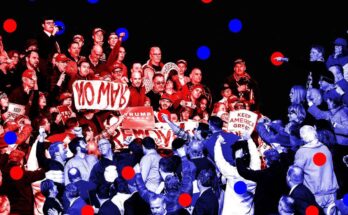“Navigating in Real-Time Environments”
Communications of the ACM, December 2020, Vol. 63 No. 12, Pages 26-28
The profession of IT
By Peter J. Denning
“Jim Selman has been a professional leadership coach for over 30 years. He frequently encounters executives and team leaders who are dumb-founded because the world is changing so rapidly and sometimes chaotically that their best laid plans are useless and ineffective. Many computing professionals have a similar experience today after the COVID-19 avalanche swept through. In his recent book, Living in a Real-Time World, he summarized his conclusions about what professional leaders should learn in order to be effective in this environment. I explored this issue with him.”
—Peter J. Denning
DENNING: Your book Living in a Real-Time World, 6 Capabilities to Prepare Us for an Unimaginable Future seems particularly relevant given what’s happening around the world. What do you mean by ‘real-time world’?
SELMAN: I started my career in the 1960s in IT as a programmer and systems analyst. At the beginning, computers were 100% information processing machines. As processor speeds got faster and faster, the gap between inputs and outputs got shorter and shorter to the point of being imperceptible—computers transformed from informing machines to performing machines. The idea of “real-time” computing and capabilities like process-control came into existence. Real-time computing means computing that responds rapidly and effectively to inputs as they appear, without knowing when or if they will occur.
I’m using the term in the same way. The technology-charged world is changing so rapidly that many of our plans and expectations are dashed by surprises. The future we imagined and planned for never appears. This is why I call the future unimaginable. This is immensely frustrating to many people. Today, in my opinion, we need to be more like the real-time computers, responding to what actually appears rather than what our best laid plans expect to appear. We need to transform our worldview, our practices, and our skills to successfully navigate a reality that is increasingly unpredictable and beyond our control.
What do you think is driving all this chaos and unpredictability?
I don’t know why the world is the way it is or what causes anything really given the overwhelming complexity we’re experiencing. I suspect that computers, networks, and the whole of technological progress is a big part of what has accelerated the pace of change beyond our comprehension. The massive increases in efficiency and knowledge over the past few decades have been amazing and beneficial. Yet, as you pointed out in your last piece on the current “avalanche” of change, the world economy is subject to “avalanches”—disruptive changes that sweep away jobs, identities, wealth, and opportunities. An avalanche leaves people feeling lost, confused, left behind, or afraid. While many avalanches are small, affecting only a limited segment of the economy, COVID-19 is an avalanche that no one could escape. It triggered other avalanches such as the collapse of some industry sectors (for example, air transport), oil prices, international trade, and some higher education systems. Like it or not, this avalanche calls us all to navigate unimagined environments.
The ‘Four Horsemen” of Silicon Valley (Amazon, Google, Facebook, and Apple) are leading the charge into a future that is unimaginable. But the current pandemic, threats from climate change, and unprecedented levels of unemployment make us realize this is the unimaginable future—a perfect storm of disruptive change. Why we got here isn’t very relevant. The only question is what to do now—how do we navigate, make choices, plan and invest in the future when we don’t trust our predictions and we have little control over changes that we cannot comprehend?
I am fond of Star Trek as a metaphor for this situation …. we’re “going where no one has gone before” and we have no certainty of our destination or maps to guide us. I suggest that our traditional notions of leadership are of necessity transforming from “Leader” to “Navigator.” Navigators don’t know any more than anyone else, but they keep us centered in where we are and where we’ve come from. With that we can move and shape the new world.
What are the traditional ways we have coped with disruptive change? Why aren’t they working anymore?
Historically, we’ve dealt with change pretty much the way we deal with everything else. We learn from the past and we gather techniques and recipes. We apply all that to the current situation in the interest of controlling future outcomes or solving specific problems. This mindset doesn’t work in a real-time world. When you make decisions and commitments and allocate resources based on an assumption that the future will be much like the past, you only guarantee dissatisfaction and frustration when that future does not appear. This simply creates a counterproductive vicious cycle that worsens the situation and is often self-destructive.
About the Authors:
Jim Selman is a seminal leader in the theory and practice of business coaching. He contributed several new concepts and techniques to the field of management, notably organizational transformation, coaching, the Merlin method for designing the future, breakthroughs, and breakdowns. He developed new approaches for leaders to producing broad “paradigm shifts.” He is a former partner in the firm of Touche Ross (Deloitte Touche), co-founder and CEO of a consulting network, Transformational Technologies, and founder and CEO of Paracomm Partners, Petaluma, CA, USA.
Peter J. Denning is Distinguished Professor of Computer Science and Director of the Cebrowski Institute for information innovation at the Naval Postgraduate School in Monterey, CA, is Editor of ACM Ubiquity, and is a past president of ACM. The author’s views expressed here are not necessarily those of his employer or the U.S. federal government.
See also:
- “Living in a Real-Time World: 6 Capabilities to Prepare Us for an Unimaginable Future” by Jim Selman. Published by BookBaby, September 25, 2018.






